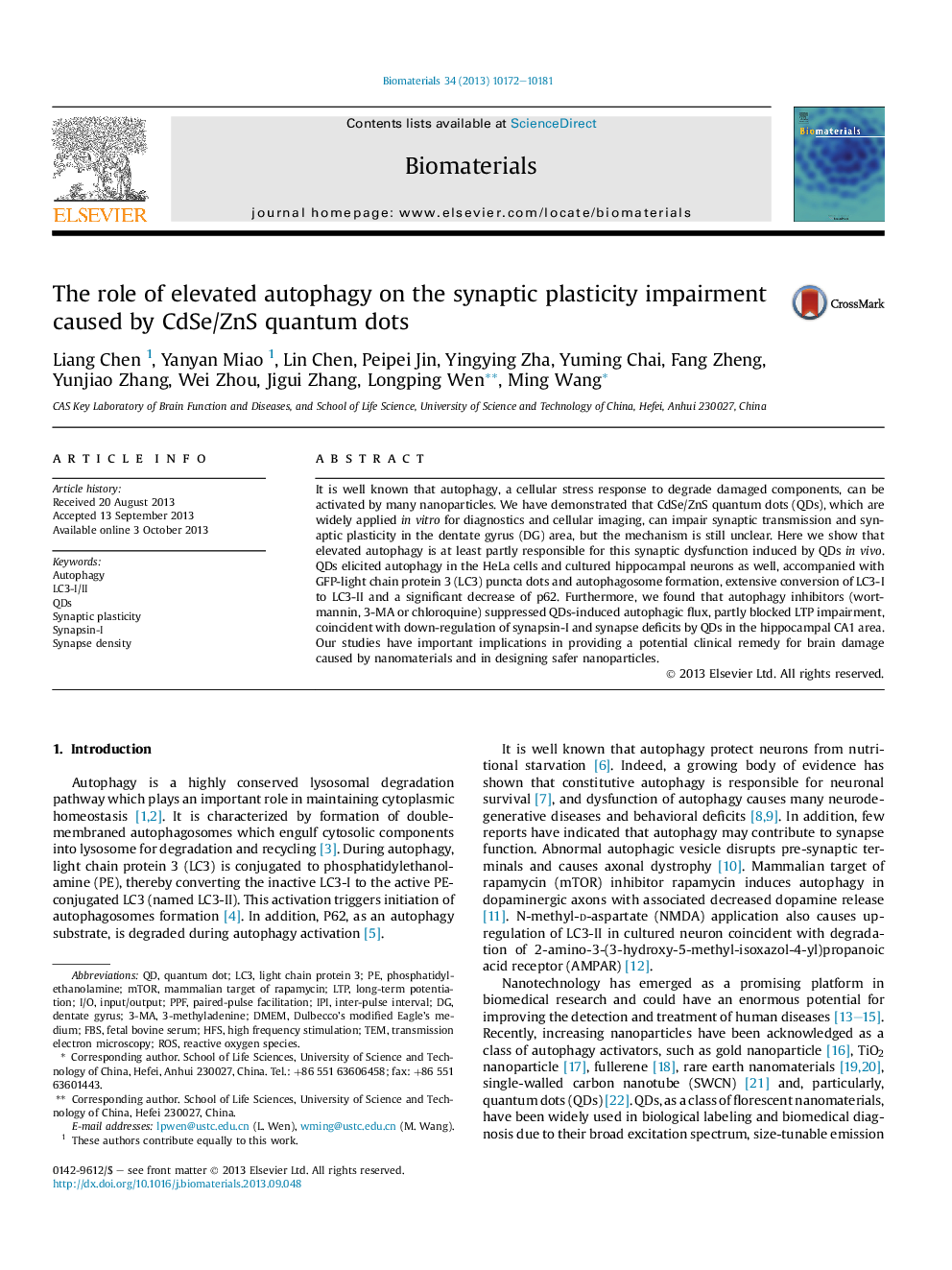| Article ID | Journal | Published Year | Pages | File Type |
|---|---|---|---|---|
| 10228159 | Biomaterials | 2013 | 10 Pages |
Abstract
It is well known that autophagy, a cellular stress response to degrade damaged components, can be activated by many nanoparticles. We have demonstrated that CdSe/ZnS quantum dots (QDs), which are widely applied in vitro for diagnostics and cellular imaging, can impair synaptic transmission and synaptic plasticity in the dentate gyrus (DG) area, but the mechanism is still unclear. Here we show that elevated autophagy is at least partly responsible for this synaptic dysfunction induced by QDs in vivo. QDs elicited autophagy in the HeLa cells and cultured hippocampal neurons as well, accompanied with GFP-light chain protein 3 (LC3) puncta dots and autophagosome formation, extensive conversion of LC3-I to LC3-II and a significant decrease of p62. Furthermore, we found that autophagy inhibitors (wortmannin, 3-MA or chloroquine) suppressed QDs-induced autophagic flux, partly blocked LTP impairment, coincident with down-regulation of synapsin-I and synapse deficits by QDs in the hippocampal CA1 area. Our studies have important implications in providing a potential clinical remedy for brain damage caused by nanomaterials and in designing safer nanoparticles.
Keywords
IPISynapse densityDMEMLC3FBSSynapsin-IHFSPPFinter-pulse intervalmTORQDs3-MA3-methyladenineI/ODulbecco's modified Eagle's mediumROSAutophagyTemhigh frequency stimulationpaired-pulse facilitationlong-term potentiationLTPfetal bovine serumdentate gyrusphosphatidylethanolamineTransmission electron microscopyquantum dotmammalian target of rapamycininput/outputSynaptic plasticityReactive oxygen species
Related Topics
Physical Sciences and Engineering
Chemical Engineering
Bioengineering
Authors
Liang Chen, Yanyan Miao, Lin Chen, Peipei Jin, Yingying Zha, Yuming Chai, Fang Zheng, Yunjiao Zhang, Wei Zhou, Jigui Zhang, Longping Wen, Ming Wang,
